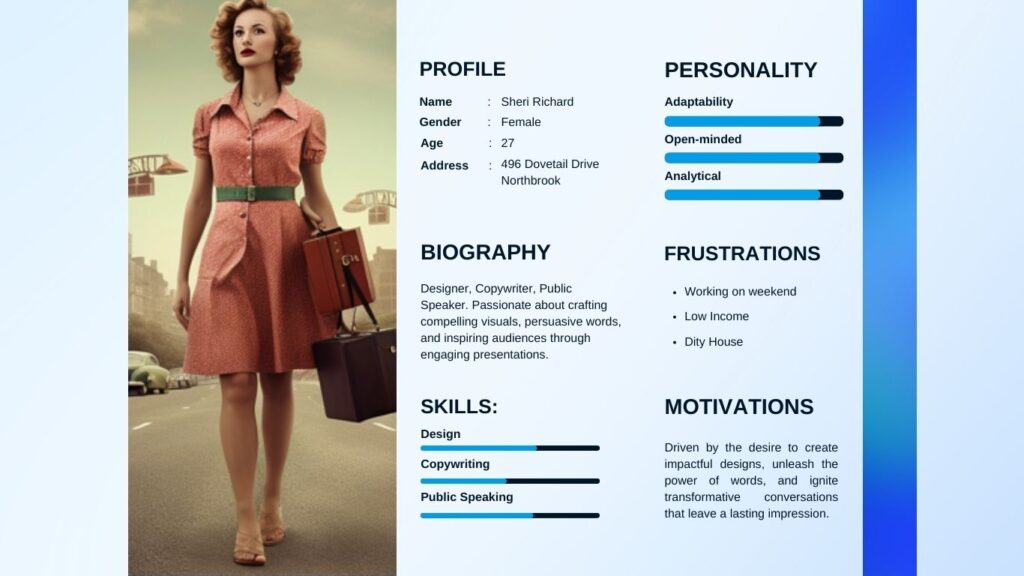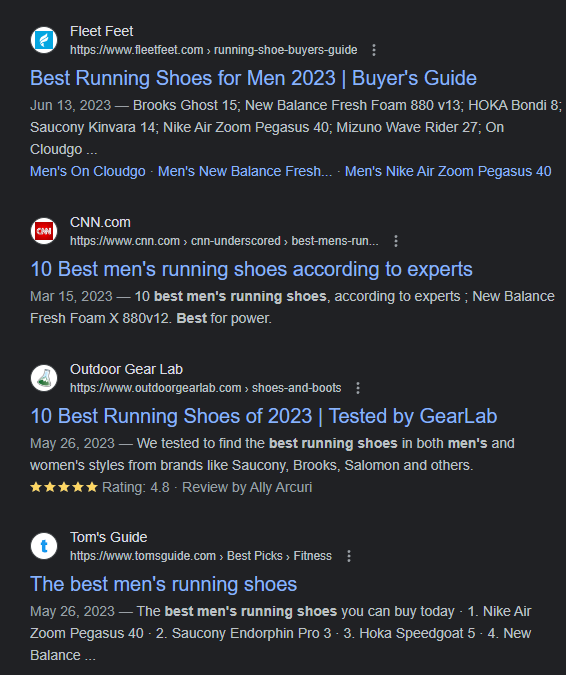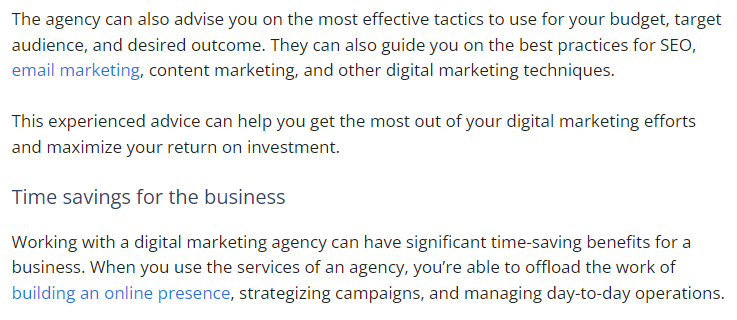Have you ever spent hours writing a piece of content, only to find that it didn’t perform as well as you hoped? You’re not alone. High-quality content is crucial for SEO, but it’s easy to make mistakes that can hinder your efforts.
I can imagine the pain of spending hours crafting a brilliant piece of content for your website. You do your research, optimize your keywords, format your text, and proofread your work. You hit publish and wait for the traffic to pour in.
But nothing happens.
Your content gets buried in the depths of Google’s search results, never to be seen by your target audience. You wonder what went wrong and how you can fix it.
Sound familiar?
If so, you’re not alone. Many SEO writers struggle with creating content that ranks well and attracts readers. They make common content writing mistakes that hurt their SEO efforts and waste their time and resources.
But don’t worry – there’s hope. In this blog post, we’ll highlight the most common content writing mistakes made by SEO writers and provide practical tips to avoid them. By following these tips, you’ll be able to improve the effectiveness of your content and drive better results for your website.
Let’s dive in!
Mistake #1: Neglecting Keyword Research and Optimization

Keywords are the backbone of SEO content writing. Without it, you’re shooting in the dark. Keyword Research helps you understand what your audience is searching for and how you can provide them with relevant and valuable information.
Yet many SEO writers neglect keyword research and optimization. They either don’t do any research at all or use the wrong keywords for their content. Don’t make this mistake. This leads to content that doesn’t match the search intent of the users or doesn’t rank well for competitive keywords.
To avoid this mistake, you need to do thorough keyword research and optimization for every piece of content you create.
Tips to effective keyword research and optimization
– Use tools like Google Keyword Planner, Semrush, or Ahrefs to find relevant keywords for your topic and niche and include them naturally in your content.
– Analyze the search volume, difficulty, and competition of each keyword to find the best ones for your content.
– Use long-tail keywords (keywords that are more specific and less competitive) to target niche audiences and rank higher.
– Include your main keyword in your title, URL, headings, meta tags, and throughout your content.
– Use synonyms, variations, and related keywords to avoid keyword stuffing and make your content more natural and diverse.
Mistake #2: Failing to Create Engaging and Relevant Content

Keywords are important, but they’re not enough. Your content may be optimized for search engines, but if it’s not engaging and relevant to your target audience, it won’t perform well. Therefore, you need to create engaging and relevant content that provides value to your readers and solves their problems.
Understand your audience and their needs, and create content that provides value. Use storytelling, anecdotes, and humor to make your content more interesting. Like a chameleon changing its colors to blend in with its surroundings, adapt your writing style to match the tone and voice of your brand.
Many SEO writers fail to do this. They produce content that lacks quality, relevance, or value. They don’t understand their target audience and their needs. They don’t use stories, humor, or emotions to connect with their readers. They don’t offer unique insights or solutions that set them apart from their competitors.
To avoid this mistake, you need to create engaging and relevant content that meets the expectations of your readers and exceeds them.
Tips to creating engaging and relevant content
– Know your target audience and their pain points, goals, preferences, and challenges.
– Use buyer personas (fictional representations of your ideal customers) to guide your content creation process.
– Use a catchy hook (a sentence or a question that grabs the attention of the readers) at the beginning of your content.
– Use a clear and compelling thesis statement (a sentence that summarizes the main idea and purpose of your content) at the end of your introduction.
– Use stories, anecdotes, humor, or emojis to add interest and emotion to your content.
– Use strong calls to action (CTAs) (sentences that urge the readers to take a specific action) at the end of your content.
– Use social proof (testimonials, reviews, ratings, etc.) to build trust and credibility with your readers.
Mistake #3: Ignoring Proper Formatting and Structure
Poor formatting and structure can make even the best content difficult to read. They help you organize your content into logical sections and make it easier for the readers and search engines to scan and understand it. This makes it crucial for SEO content writing.
Think of formatting like a roadmap – it should guide the reader through your content and make it easy for them to find what they’re looking for. But many SEO writers fail to understand this.
They use long paragraphs, lack headings, or use inadequate subheadings. They don’t use bullet points, lists, tables, or images to break up their text. They don’t use white space, fonts, colors, or contrast to enhance their readability.
To avoid this mistake, you need to use proper formatting and structure for every piece of content you create.
Tips to help you publish easy to read content
– Use short sentences, active voice, contractions, and direct address to make your content clear and concise.
– Use headings and subheadings to divide your content into sections and sub-sections.
– Use bullet points, lists, tables, or images to present your information in a structured and visual way that is easy to scan.
– Use white space, fonts, colors, or contrast to create contrast and hierarchy in your content.
– Use third party tools like Grammarly, Hemingway, or Yoast to check and improve your readability score.
Mistake #4: Overlooking Grammar and Proofreading
Grammar and spelling mistakes can undermine the credibility of your content and turn readers away. Don’t rely solely on spellcheck – take the time to proofread your work carefully by paying detailed attention to it. Read it out loud or have someone else review it to catch any errors you may have missed.
Grammar check and proofreading help you avoid errors and mistakes that can damage your credibility and user experience. However, many SEO writers publish sloppy content that contains grammar, spelling, punctuation, or syntax errors. They don’t check their content for plagiarism or duplicate content. They don’t use tools or professionals to help them with editing and proofreading.
To avoid this mistake, you need to pay attention to grammar and proofreading for every piece of content you create.
Tips to help you publish error free content
– Use tools like Grammarly, ProWritingAid, or Copyscape to check and correct your grammar, spelling, punctuation, syntax, and plagiarism.
– Read your content aloud or use text-to-speech software to spot errors and mistakes that you might miss otherwise.
– Ask a colleague, a friend, or a professional editor to review your content and give you feedback.
– Proofread your content multiple times before publishing it.
Mistake #5: Neglecting Meta Tags and Descriptions

Meta tags and descriptions provide search engines with information about your content. Neglecting them or poorly optimizing them can hurt your SEO efforts. Therefore, always use relevant keywords in your meta tags and descriptions, but don’t stuff them with keywords – keep them concise and informative.
Meta tags and descriptions help you optimize your content for search engines and users. They provide information about your content’s title, topic, keywords, and summary. But many SEO writers neglect it. They either don’t use them at all or use them poorly. They don’t include their main keyword in their meta tags and descriptions. They don’t write catchy and informative meta descriptions that entice the users to click on their content.
To avoid this mistake, you need to use meta tags and descriptions for every piece of content you create.
Tips to help you improve meta tags and descriptions
– Use your main keyword in your meta title (the title that appears on the SERPs)
Use your main keyword in meta description (the summary that appears below the title on the SERPs).
– Write a catchy and informative meta description that summarizes the main idea and benefit of your content.
– Keep your meta title under 60 characters and your meta description under 160 characters.
– Use tools like Moz or SERP Simulator to preview how your meta tags and descriptions will look on the SERPs.
Mistake #6: Failing to Include Internal and External Links

Including internal and external links in your content can improve its SEO performance. They help you improve your authority, relevance, and user experience. They provide additional information or resources for your readers and search engines.
Internal links help search engines understand the structure of your site, while external links to authoritative sources can boost your credibility. Don’t neglect this important step – incorporate relevant links into your content.
Many SEO writers fail to properly include internal and external links in their content. They either don’t use any links at all or use irrelevant or low-quality links. They don’t link to their own content or other reputable sources. They don’t use anchor text (the clickable text that links to another page) that describes the linked page.
To avoid this mistake, you need to include internal and external links in every piece of content you create.
Tips to help you include internal and external links
– Link to your own content (internal links) to create a network of related pages on your website.
– Link to other reputable sources (external links) to support your claims, provide evidence, or offer more information.
– Use descriptive anchor text that tells the readers and search engines what the linked page is about.
– Use tools like Ahrefs or Moz to check the quality and authority of the links you use.
Mistake #7: Forgetting to Optimize for Readability and User Experience
Readability and user experience are crucial for SEO content writing. They help you retain your readers’ attention, increase their engagement, and reduce their bounce rate. Therefore, avoid using complex language or industry jargon that may confuse readers.
Consider mobile optimization and ensure that your site is easy to navigate. Like a chef carefully plating a dish, pay attention to the presentation of your content – it can make all the difference.
Disassociate yourself from SEO writers who use complex language, jargon, or acronyms that confuse their readers. They don’t consider mobile optimization or accessibility issues. They don’t provide clear navigation or guidance for their readers.
To avoid this mistake, you need to optimize your content for readability and user experience for every piece of content you create.
Tips to help you avoid readability and user experience mistakes
– Use simple language, plain English, or common words that your readers can easily understand.
– Avoid jargon, acronyms, or technical terms that might alienate your readers.
– Consider mobile optimization or accessibility issues such as font size, color contrast, screen size, etc.
– Provide clear navigation or guidance for your readers such as headings, subheadings, menus, buttons, etc.
Conclusion
Content writing is not all rosy – but it’s not impossible either. By avoiding these common content writing mistakes, you can improve your content writing skills, enhance your SEO efforts and drive better results for your website. Implement the tips and techniques provided in this guide to create high-quality, engaging, and effective content.
Content writing is like a puzzle. You need to put all the pieces together to create a complete picture. But if you miss one piece or put it in the wrong place, the picture won’t look right.
Don’t let common content writing mistakes ruin your puzzle. Avoid them and create content that shines like a star.
Are you ready to take your content writing to the next level? Contact us today and let us help you with your content writing needs. We have a team of experienced and professional SEO writers who can create engaging and relevant content for your website.
Don’t miss this opportunity to boost your online presence and grow your business.